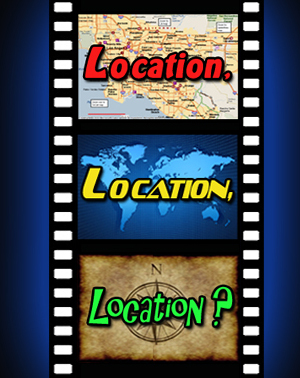Did you ever wonder what happens to the myriad of props, costumes, and set pieces created for a film or television show after a movie has wrapped or a TV show comes to the end of its run? Do those items end up in a landfill, get placed on the auction block or maybe end up as valuable artifacts in a museum?
Beyond the Marquee set out to find the answers to those questions and many more when Warner Bros. Studios Archives graciously opened their doors to us for an exclusive look at the impressive Warner Bros. Museum.
In this first of three episodes covering the Museum, host Steve Czarnecki goes on an in-depth tour led by Warner Bros. Chief Archivist, Leith Adams, as they discuss some of the classic props and costumes from Warner Bros. Studios rich history.
Want to see Part 2? Check it out here: PART TWO
Want to see Part 3? Check it out here: PART THREE
Read more on the history of Warner Bros. Studio after the jump!
One of the most respected, diversified and successful motion picture and television studios in the world, Warner Bros. Studios began when the brothers Warner (Albert, Sam, Harry and Jack L.) incorporated their fledgling movie company on April 4, 1923. In 1927, the release of the world’s first “talkie,” (synchronized-sound feature film), “The Jazz Singer,” set a character and tone of innovation and influence that would become synonymous with the name Warner Bros. And–as Al Jolson foretold in this milestone movie–“you ain’t heard nothin’ yet!”
Since those early days, Warner Bros. Studios has amassed an impressive legacy based on world-class quality entertainment and technological foresight and created a diversified entertainment company with an unparalleled depth and breadth. Its unmatched consistency and success is built on a foundation of stable management throughout its history (especially by entertainment industry standards), long-term creative relationships with many of the world’s leading talent, and an unwavering dedication to excellence.
The Studio’s “contract players” became some of the greatest stars of all time: Bette Davis, James Cagney, Paul Muni, Humphrey Bogart, Edward G. Robinson and Errol Flynn, among others. Behind the camera were Hal Wallis, Darryl F. Zanuck, Busby Berkeley, Michael Curtiz, William Wellman, Howard Hawks and Mervyn LeRoy, to name just a few. The ’30s also marked the beginning of the now-classic Looney Tunes and Merrie Melodies cartoons.
The Warner Bros. Television story began in 1955 when the venerable Warner Bros. film studio made a bold move into what was then a fledgling new arena—television—with the debut of the western adventure “Cheyenne.” In those early pioneering days, comedy was the king of the small screen, but Warner Bros. Television targeted a different genre, the dramatic series—and carved out an important new and very successful niche. “Cheyenne” was only the first of the many hits to come in the ’50s. Also launched that decade were the now-classic series “Maverick,” “77 Sunset Strip,” “Colt .45” and “Hawaiian Eye.”
Warner Bros. Entertainment is headquartered at the Warner Bros. Studios lot, 142 acres in Burbank, California, which is considered one of the foremost motion picture and television production and post-production facilities in the world and home to 35 soundstages (including one of the world’s tallest stages, which has an in-ground tank capable of holding more than two million gallons of water).
The company’s vast library, considered one of the best and largest in the world, consists of more than 6,650 feature films, 50,000 television titles and 14,000 animated titles (including over 1,500 classic animated shorts).

 September 4th, 2012
September 4th, 2012  Beyond the Marquee
Beyond the Marquee 
 Posted in
Posted in  Tags:
Tags: 






